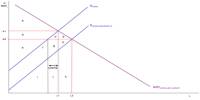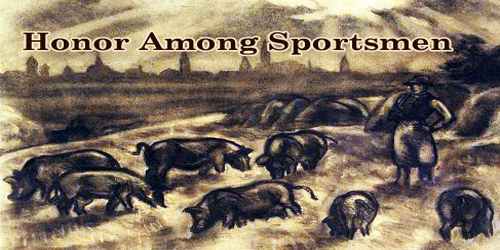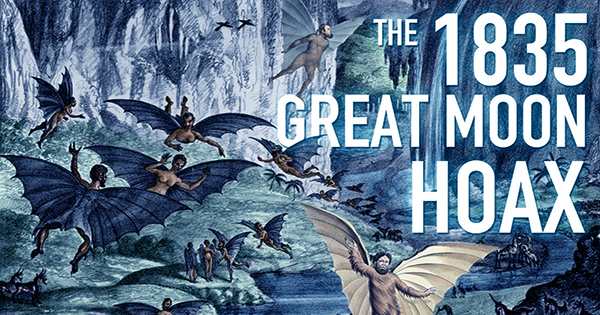Complexity economics is the application of complexity science to the problems of economics. It studies computer simulations to gain insight into economic dynamics and avoids the assumption that the economy is a system in equilibrium.
Models
The “nearly archetypal example” is an artificial stock market model created by the Santa Fe Institute in 1989. The model shows two different outcomes, one where “agents do not search much for predictors and there is convergence on a homogeneous rational expectations outcome” and another where “all kinds of technical trading strategies appearing and remaining and periods of bubbles and crash occurring”.
Another area has studied the prisoner’s dilemma, such as in a network where agents play amongst their nearest neighbors or a network where the agents can make mistakes from time to time and “evolve strategies”. In these models, the results show a system that displays “a pattern of constantly changing distributions of the strategies”.
More generally, complexity economics models are often used to study how non-intuitive results at the macro-level of a system can emerge from simple interactions at the micro-level. This avoids assumptions of the representative agent method, which attributes outcomes in collective systems as the simple sum of the rational actions of the individuals.
Measures
Economic Complexity Index
Harvard economist Ricardo Hausmann and MIT physicist Cesar A. Hidalgo introduced a spectral method to measure the complexity of a country’s economy by inferring it from the structure of the network connecting countries to the products that they export. The measure combines information of a country’s diversity, which is positively correlated with a country’s productive knowledge, with measures of a product’s ubiquity (number of countries that produce or export the product). This concept, known as the “Product Space”, has been further developed by MIT’s Observatory of Economic Complexity, and in The Atlas of Economic Complexity in 2011.
Relevance
The Economic Complexity Index (ECI) introduced by Hausmann and Hidalgo is highly predictive of future GDP per capita growth. In Hausmann, Hidalgo et al. show that the ability of the ECI to predict future GDP per capita growth is between 5 times and 20 times larger than the World Bank’s measure of governance, the World Economic Forum’s (WEF) Global Competitiveness Index (GCI) and standard measures of human capital, such as years of schooling and cognitive ability.
Metrics for Country Fitness and Product Complexity
Pietronero and collaborators have recently proposed a different approach. These metrics are defined as the fixed point of the non-linear iterative map. Different from the linear algorithm giving rise to the ECI, this non-linearity is a key point to properly deal with the nested structure of the data. The authors of this alternative formula claim it has several advantages:
- Consistency with the empirical evidence from the export country-product matrix that diversification plays a crucial role in the assessment of the competitiveness of countries. The metrics for countries proposed by Pietronero is indeed extensive with respect to the number of products.
- Non-linear coupling between fitness and complexity required by the nested structure of the country-product matrix. The nested structure implies that the information on the complexity of a product must be bounded by the producers with the slowest fitness.
- Broad and Pareto-like distribution of the metrics.
- Each iteration of the method refines information, does not change the meaning of the iterated variables and does not shrink information.
The metrics for country fitness and product complexity have been used in a report of the Boston Consulting Group on Sweden’s growth and development perspectives.
Features
Brian Arthur, Steven N. Durlauf, and David A. Lane describe several features of complex systems that deserve greater attention in economics.
- Dispersed interaction—The economy has interaction between many dispersed, heterogeneous, agents. The action of any given agent depends upon the anticipated actions of other agents and on the aggregate state of the economy.
- No global controller—Controls are provided by mechanisms of competition and coordination between agents. Economic actions are mediated by legal institutions, assigned roles, and shifting associations. No global entity controls interactions. Traditionally, a fictitious auctioneer has appeared in some mathematical analyses of general equilibrium models, although nobody claimed any descriptive accuracy for such models. Traditionally, many mainstream models have imposed constraints, such as requiring that budgets be balanced, and such constraints are avoided in complexity economics.
- Cross-cutting hierarchical organization—The economy has many levels of organization and interaction. Units at any given level behaviors, actions, strategies, products typically serve as “building blocks” for constructing units at the next higher level. The overall organization is more than hierarchical, with many sorts of tangling interactions (associations, channels of communication) across levels.
- Ongoing adaptation—Behaviors, actions, strategies, and products are revised frequently as the individual agents accumulate experience.
- Novelty niches—Such niches are associated with new markets, new technologies, new behaviors, and new institutions. The very act of filling a niche may provide new niches. The result is ongoing novelty.
- Out-of-equilibrium dynamics—Because new niches, new potentials, new possibilities, are continually created, the economy functions without attaining any optimum or global equilibrium. Improvements occur regularly.
















